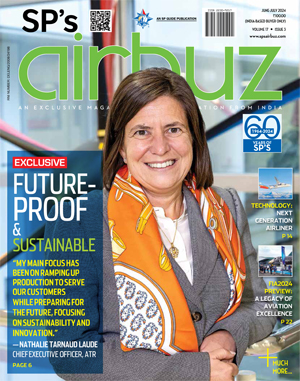Charting the Skies of Tomorrow
From Electric Flight to Hypersonic Journeys, unveiling the Future Technologies ushering in a New Era of Air Transport

Mobility has traditionally been the central pillar of all socio-economic development since times immemorial. It facilitates movement of goods and services, jobs, and education etc. Air allows fastest means of transportation. Air travel is no more a luxury reserved for the wealthy and privileged, but for fast moving masses. It is fast becoming highly accessible and also affordable. With greater urbanisation, there is increased demand for flights, and airports. The air mobility systems are getting stretched. The increased flights also mean greater cabon emissions and the cascading impact on climate. The sustainable mobility has to factor in many aspects, and all players must have a clear roadmap and achievable targets. To meet the increased requirements, and also balance the environmental needs air-mobility needs support of technology. The key issues are efficiency, flight safety, security, and making the experience enjoyable for passengers.
From electric air taxis to autonomous flying technologies, a new era of urban air mobility is taking shape, promising greener and quieter flights, shorter commutes, and enhanced convenience
Airlines worldwide carry nearly 4.3 billion passengers a year and 60 million tonnes of freight on 40 million commercial flights. Meaning transporting over 10 million passengers and around $18 billion worth of goods. With over 1,00,000 commercial flights around the world each day, it means 450 departures per hour. Air is one of the safest and most reliable modes of transportation. Currently, worldwide, 74 per cent live within 100 km of an airport. The demand for air transport will increase by an average of 4.3 per cent per annum over the next 20 years. By mid-2030s there will be over 2,00,000 flights per day. Aviation is no more just mobility between continents and cities, but also urban mobility within cities. Doubling of passenger and cargo numbers by 2036, will mean demand for pilots, engineers, air traffic controllers and other aviation-related jobs.
TECHNOLOGY DEVELOPMENT OVERVIEW
Aviation is already known as a driving force of global technology development and innovations. Newer lighter, yet stronger materials, efficient and quieter engines, artificial intelligence (AI) supported autonomous devices and platforms, robotics and block chain, hybrid fuels and electric aircraft are initiatives under active engagement. New technologies are looking at hydrogen fuel, electric flying, eVTOLs, futuristic airships, commercial supersonic jets, autonomously-flying aircraft, and space-travel jets. Passenger comfort, congestion reduction and time saving, and coordination with surface transportation means is also important. Sustainable air mobility will require all this and more. International Civil Aviation Organisation (ICAO) is closely following the United Nations 2030 Agenda for Sustainable Development. Alternative fuels can significantly support of the environmental protection. Big Data could increase safety, efficiency and sustainability. Digital technologies are changing the landscape of airline industry to make travel experiences more personalised, valuable and memorable.
ENGINE TECHNOLOGIES
Aircraft engines need to produce more power while consuming less fuel, produce less noise and reduce emission levels. Adaptive, efficient, variable cycle, versatile engine technology is being pursued by the United States efficient adaptive cycle for next generation aircraft. Initially designed for military engines, some these technologies will be relevant for future airline engines. Currently fighter engines are optimised for high speed and commercial engines for high fuel efficiency. The new engines will be designed to meet both these requirements. Other new technologies related to engines include those to shorten engine development cycle, reduce engine weight, enhance reliability, increase component life and reduce maintenance requirements. Ultra-high bypass turbofans, open rotor engines, use of alternative fuels, relocating engines on the body of the aircraft such that engine noise is deflected upwards are some design considerations. Growth of computer technology and the microelectronics revolution allowed fullauthority electronic digital active controls on aircraft engines. Magnetic bearings suspend the rotating members eliminating friction and lubrication requirements. Real time analysis helps diagnostics, and the ‘Life Cycle Cost’. 3D printing and additive manufacture is creating spares on demand.
SUSTAINABLE AVIATION FUEL (SAF)
SAF is a liquid fuel currently used in commercial aviation which reduces CO2 emissions by up to 80 per cent. It can be produced from a number of sources (feedstock) including waste oil and fats, green and municipal waste and non-food crops. It can also be produced synthetically via a process that captures carbon directly from the air. It is ‘sustainable’ because the raw feedstock does not compete with food crops or water supplies, or is responsible for forest degradation. It is estimated that SAF could contribute around 65 per cent of the reduction in emissions needed by aviation to reach net-zero in 2050. This will require a massive increase in production in order to meet demand. The largest acceleration is expected in the 2030s as policy support becomes global, SAF becomes competitive with fossil kerosene, and credible offsets become scarcer.
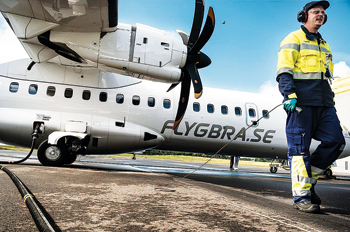
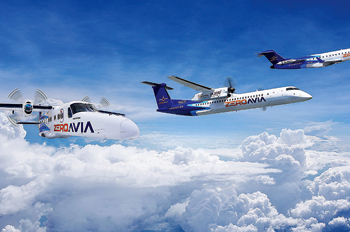
There are still several challenges associated with SAF, such as limited availability and higher costs. All major carriers in the world has launched own SAF initiatives. It can be blended with fossil jet fuel. SAF must be produced in far greater sums to make a meaningful difference in climate change and keep up with global jet fuel demands. SAF is still a fledgling industry, with roughly only 20 million gallons (75 million litres) of production capacity in 2020, which accounts for less than 0.05 per cent of the world’s aviation fuel use.
AUTONOMOUS FLYING TECHNOLOGIES
Accurate three-dimensional position technology, collision avoidance sensors, high speed computing, quick-reaction controls, autopilots have made it possible driverless cars which are mushrooming. There also new developments in autonomous flying technologies. Their introduction as part of the unmanned urban air mobility has already begun.
Autonomous control systems are reaching a point where several air taxis and associated regulatory regimes are being developed. Autonomous flight is coming to civil aviation sooner than anyone thinks, and it may prove to be a surprising boon for flyover country. While public perception problem remains an issue, a Swiss bank UBS report estimated that autonomous planes could save the air transportation industry more than $35 billion per year. For the past few years, Xwing has been running automated test missions, and plans to introduce and operate these vehicles by late 2025. They expect autonomous aircraft to be transporting human passengers by the end of this decade.
ELECTRIC AIRCRAFT
The aircraft powered by electricity reduce the environmental effects of aviation, providing zero emissions and quieter flights. Electricity may be supplied by a variety of methods, the most common being batteries. Most have electric motors driving propellers or turbines. Between 2015 and 2016, Solar Impulse 2 completed a circumnavigation of the Earth using solar power. Electric VTOL aircraft or personal air vehicles are being considered for Urban Air Mobility. Electric commercial airliners could lower operating costs. The NASA Electric Aircraft Testbed (NEAT) is used to design, develop, assemble and test electric aircraft power systems. The UK budget carrier EasyJet announced it was developing an electric 180-seater for 2027 with Wright Electric. The single aisle, short haul airliner targets 50 per cent lower noise and 10 per cent lower costs. Israel Aerospace Industries plans to develop a short-haul electric airliner, building on its small UAS electric power systems. On May 28, 2020, the MagniX electric-powered nine-passenger Cessna 208B eCaravan flew on electric power, and is working towards commercial operation certification. In September 2022, Swedish electric airplane maker Heart Aerospace unveiled significant design updates to its first electric aircraft. The new airplane design, called the ES-30, is a regional electric airplane with a capacity of 30 passengers and it replaces the company’s earlier 19-seat design, the ES-19. It is driven by electric motors powered by batteries, which allows the airplane to operate with zero emissions and low noise. On March 22, 2021, Toulouse-based Aura Aero announced the development of its ERA (Electric Regional Aircraft), a 19-passenger electric aircraft, planned to be certified in 2026.
AIR TAXIS (EVTOL)
An electric vertical take-off and landing (eVTOL) aircraft is a variety of VTOL (vertical take-off and landing) aircraft that uses electric power to hover, take off, and land vertically. This has been possible thanks to advances in electric propulsion (motors, batteries, fuel cells, electronic controllers) and the emerging need for new aerial vehicles for urban air mobility that can enable greener and quieter flights. Electric and hybrid propulsion systems have also the potential of lowering the operating costs of aircraft. Manufacturers such as Airbus, Boeing, Embraer, Honda, Hyundai, and Toyota, as well as several start-up companies are working on these. Many eVTOL’s concept are for Air Taxi application. Pipistrel, an Uber Elevate partner, is working on a five seats air taxi. Volocopter, proposed its air taxi service on the Volocopter 2X.
HYDROGEN POWERED AIRCRAFT
Hydrogen-powered aircraft use hydrogen fuel that can either be burned in a jet engine or another kind of internal combustion engine, or can be used to power a fuel cell to generate electricity to power an electric propulsor. It cannot be stored in a traditional wet wing, and hydrogen tanks have to be housed in the fuselage or be supported by the wing. Hydrogen, which can be produced from low-carbon power and can produce zero emissions. Boeing and Airbus plan to launch a first commercial hydrogen-powered aircraft by 2035, and scaling up through 2050, by when they could account for a third of aviation’s energy demand. Gaseous hydrogen may be used for short-haul aircraft, and liquid hydrogen for long-haul aircraft. Hydrogen’s high specific energy means it would need less fuel weight for the same range, ignoring the repercussion of added volume and tank weight. The economics of cost of producing hydrogen have to be worked out.
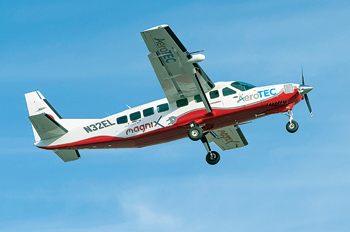
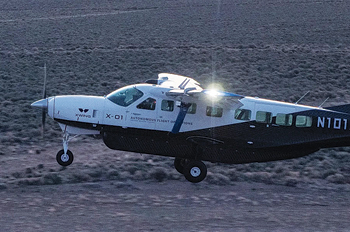
On January 19, 2023, ZeroAvia flew its Dornier 228 testbed with one turboprop replaced by a prototype hydrogen-electric powertrain in the cabin, consisting of two fuel cells and a lithium-ion battery for peak power. On March 2, 2023, Universal Hydrogen flew a Dash 8 40-passenger testbed with one engine powered by their hydrogen-electric powertrain. The company has received an order from Connect Airways to convert 75 ATR 72-600 with their hydrogen powertrains. In December 2021, the UK Aerospace Technology Institute (ATI) presented its FlyZero study of cryogenic liquid hydrogen used in gas turbines for a 279-passenger aircraft design with 9,720 km of range. Pratt & Whitney wants to associate its geared turbofan architecture with its Hydrogen Steam Injected, Inter Cooled Turbine Engine (HySIITE) project, to avoid carbon dioxide emissions, reduce NOx emissions by 80 per cent, and reduce fuel consumption by 35 per cent compared with the current jet-fuel PW1100G, for a service entry by 2035. In February 2022, Airbus announced a demonstration of a liquid hydrogen-fueled turbofan, with CFM International modifying the combustor, fuel system and control system of a GE Passport, mounted on a fuselage pylon on an A380 prototype, for a first flight expected within five years.
SUPERSONIC AND HYPERSONIC CIVIL FLIGHT PROJECTS
To date, the only supersonic airliners in regular service have been Concorde and the Tupolev Tu-144. The last passenger flight of the Tu-144 was in June 1978 and it was last flown in 1999 by NASA. Concorde’s last commercial flight was in October 2003. Several companies have each proposed a supersonic business jet, which may bring supersonic transport back again. Drawbacks and design challenges such as excessive noise on take-off, sonic booms, development costs, expensive maintenance, high fuel consumption, extremely high emissions, and increased cost per seat. Despite these challenges, Concorde claimed it operated profitably.
The age of space tourism offers tantalising glimpses of suborbital adventures, opening the doors to a new frontier in human exploration and leisure
Yet new platforms are under development. Lockheed and Boeing are working on supersonic and hypersonic flight along with NASA. Boom Technology has been developing a 40-passenger supersonic jet capable of flying Mach 1.7. That will be quieter and 30 per cent more efficient than the Concorde and will be able to fly Los Angeles to Sydney in 6 hours. It is planned to go into service in 2029. FAA and ICAO are working on lifting bans in the early 2020s. The Lockheed Martin X-59 QueSST X-plane is supporting technology development. According to published reports, the market for supersonic airliners costing $200 million could be 1,300 over a 10-year period, worth $260 billion. Russians are also working on Supersonic Business and commercial jets. The Spike S-512 is a self-funded twinjet design aiming to cruise at Mach 1.6 over water for 11,500 km, with 22 passengers in a windowless cabin. NASA plans to fly the Lockheed Martin X-59 Quiet Supersonic Transport (QueSST) low-boom flight demonstrator for ICAO standards in 2025. Exosonic Inc was awarded a contract to develop a supersonic jet which could be used as Air Force One. Virgin Galactic with Rolls-Royce unveiled the concept of a Mach 3 capable twinjet delta wing aircraft that can carry up to 19 passengers. The supersonic Tupolev Tu-444 or Gulfstream X-54 have also been proposed. The German Space-Liner is a suborbital hypersonic winged passenger spaceplane project under preliminary development. Boeing unveiled in 2018 a Mach 6 passenger airliner that could cross the Atlantic in 2 hours or the Pacific in 3 at 1,00,000 ft altitude. A reusable demonstrator could be flown as early as 2023 or 2024 for a potential entry into service from the late 2030s.
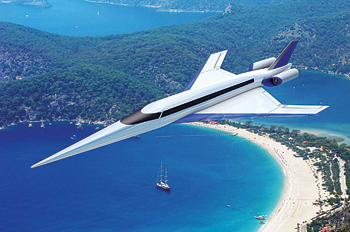
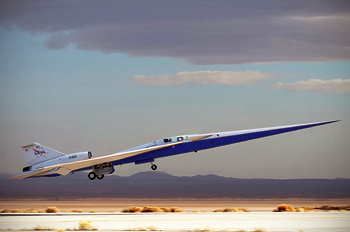
SPACE TRAVEL
The trio of billionaire-led rocket companies, Bezos’ Blue Origin, Branson’s Virgin Galactic, where tickets for a suborbital spaceflight start at $4,50,000; and Elon Musk’s SpaceX, which in September launched an all-civilian spaceflight, with no trained astronauts on board. Inaugural Virgin Galactic flight in 2021 reached about 53 miles, while Blue Origin flies above the 62-mile mark. SpaceX rockets go up to 120 miles above Earth. In fact, we’ll see the launch of affordable space tourism industry within just a few years. Virgin Galactic had announced the launch of its commercial passenger service, which is now delayed to late 2023. Voyages are scheduled to begin departing from Florida in 2024, at a cost of $1,25,000 per person.
WAY AHEAD
Advancements in technology are impacting every aspect of aviation industry, from aircraft design to aircraft operations. From passenger handling to passenger comfort. From operational efficiency to flight safety and security. From saving passenger time to airlines costs. Some technologies will take time. SAF production has to go up considerably. Supersonic and hypersonic airliners are still some distance away. Space travel must become cheaper. Expectations for an electric aviation future continue to rise, but the level of technology readiness, including certification, still requires significant work. While hydrogen flying is considered by many to be the holy grail of cleaner aviation. But the energy source is still in its nascent days. It could take at least another quarter century until hydrogen becomes a market-ready technology for commercial aviation. It can be seen that many major new air travel technologies have to reach the level of market maturity.





